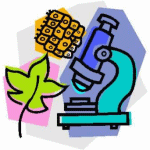Biology
|
25 february 2015 06:01:37 |
| Dawn- and dusk-phased circadian transcription rhythms coordinate anabolic and catabolic functions in Neurospora (BMC Biology) |
|
Tweet Background:
Circadian clocks control rhythmic expression of a large number of genes in coordination with the 24 h day-night cycle. The mechanisms generating circadian rhythms, their amplitude and circadian phase are dependent on a transcriptional network of immense complexity. Moreover, the contribution of post-transcriptional mechanisms in generating rhythms in RNA abundance is not known.
Results:
Here, we analyzed the clock-controlled transcriptome of Neurospora crassa together with temporal profiles of elongating RNA polymerase II. Our data indicate that transcription contributes to the rhythmic expression of the vast majority of clock-controlled genes (ccg’s) in Neurospora. The ccg’s accumulate in two main clusters with peak transcription and expression levels either at dawn or dusk. Dawn-phased genes are predominantly involved in catabolic and dusk-phased genes in anabolic processes, indicating a clock-controlled temporal separation of the physiology of Neurospora. Genes whose expression is strongly dependent on the core circadian activator WCC fall mainly into the dawn-phased cluster while rhythmic genes regulated by the glucose-dependent repressor CSP1 fall predominantly into the dusk-phased cluster. Surprisingly, the number of rhythmic transcripts increases about twofold in the absence of CSP1, indicating that rhythmic expression of many genes is attenuated by the activity of CSP1.
Conclusions:
The data indicate that the vast majority of transcript rhythms in Neurospora are generated by dawn and dusk specific transcription. Our observations suggest a substantial plasticity of the circadian transcriptome with respect to the number of rhythmic genes as well as amplitude and phase of the expression rhythms and emphasize a major role of the circadian clock in the temporal organization of metabolism and physiology. |
| 91 viewsCategory: Biology |
 Multisensory Causal Inference in the Brain (PLoS Biology) Multisensory Causal Inference in the Brain (PLoS Biology)The DEAH-box Helicase Dhr1 Dissociates U3 from the Pre-rRNA to Promote Formation of the Central Pseudoknot (PLoS Biology) 
|
| blog comments powered by Disqus |
MyJournals.org
The latest issues of all your favorite science journals on one page
The latest issues of all your favorite science journals on one page



